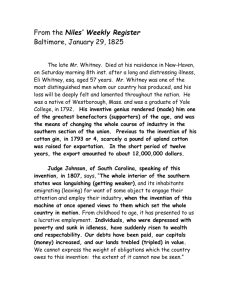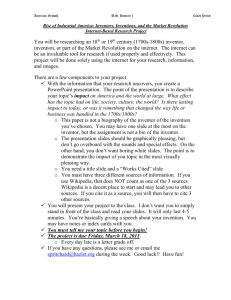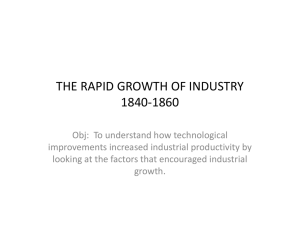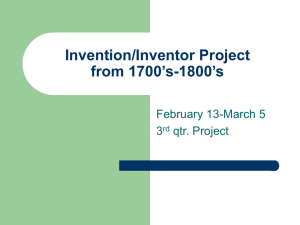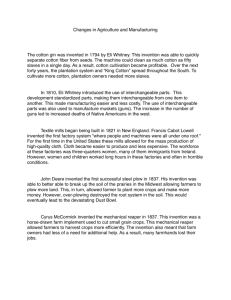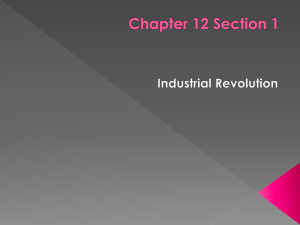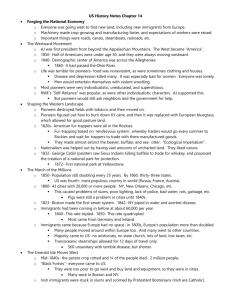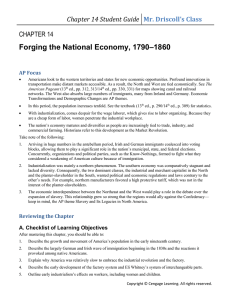Chapter 15 Review Questions
advertisement
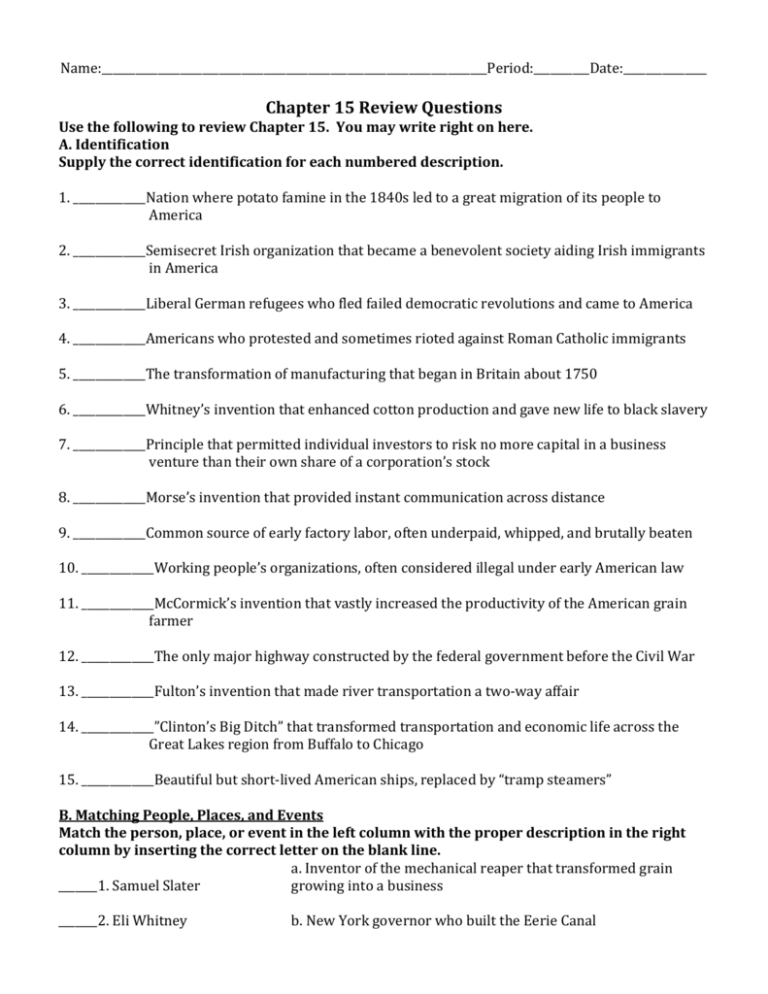
Name:_____________________________________________________________________Period:__________Date:_______________ Chapter 15 Review Questions Use the following to review Chapter 15. You may write right on here. A. Identification Supply the correct identification for each numbered description. 1. _____________Nation where potato famine in the 1840s led to a great migration of its people to America 2. _____________Semisecret Irish organization that became a benevolent society aiding Irish immigrants in America 3. _____________Liberal German refugees who fled failed democratic revolutions and came to America 4. _____________Americans who protested and sometimes rioted against Roman Catholic immigrants 5. _____________The transformation of manufacturing that began in Britain about 1750 6. _____________Whitney’s invention that enhanced cotton production and gave new life to black slavery 7. _____________Principle that permitted individual investors to risk no more capital in a business venture than their own share of a corporation’s stock 8. _____________Morse’s invention that provided instant communication across distance 9. _____________Common source of early factory labor, often underpaid, whipped, and brutally beaten 10. _____________Working people’s organizations, often considered illegal under early American law 11. _____________McCormick’s invention that vastly increased the productivity of the American grain farmer 12. _____________The only major highway constructed by the federal government before the Civil War 13. _____________Fulton’s invention that made river transportation a two-way affair 14. _____________”Clinton’s Big Ditch” that transformed transportation and economic life across the Great Lakes region from Buffalo to Chicago 15. _____________Beautiful but short-lived American ships, replaced by “tramp steamers” B. Matching People, Places, and Events Match the person, place, or event in the left column with the proper description in the right column by inserting the correct letter on the blank line. a. Inventor of the mechanical reaper that transformed grain _______1. Samuel Slater growing into a business _______2. Eli Whitney b. New York governor who built the Eerie Canal _______3. Elias Howe c. Inventor of a machine that revolutionized clothing industry _______4. Samuel F.B. Morse d. Agitators against immigrants and Roman Catholics _______5. Know-Nothings e. Wealthy New York manufacturer who laid the first temporary transatlantic cable in 1858 _______6. Commonwealth v. Hunt _______7. Cyrus McCormick _______8. Robert Fulton _______9. Cyrus Field f. Immigrant mechanic who initiated American industrialization by setting up his cotton-spinning factory in 1791 g. Painter turned inventor who developed the first reliable system for instant communication across distance _______10. Molly Maguires h. Developer of a “folly” that made rivers two-way streams of transportation _______11. DeWitt Clinton i. Radical, secret Irish labor union of the 1860s and 1870s j. Yankee mechanical genius who revolutionized cotton production and created the system of interchangeable parts k. Pioneering Massachusetts Supreme Court decision that declared labor union unconstitutional C. Putting Things in Order Put the following events in correct order by numbering them from 1 to 5. 1. _________ First telegraph message—“What hath God wrought?”-is sent from Baltimore to Washington. 2. _________ Industrial Revolution begins in Britain. 3. _________ Telegraph lines are stretched across the Atlantic Ocean and North American continent. 4. _________ Major water transportation route connects New York to Lake Eerie and points west. 5. _________ Invention of cotton gin and system in interchangeable parts revolutionized southern agriculture and northern industry. D. Matching Cause and Effect Match the historical cause in the left column with the proper effect in the right column by writing the correct letter on the blank line. Cause Effect 1. ______ The open, rough-and-tumble society of a. Made the fast-growing United States the fourth the American West most populous nation in the Western World 2. ______ Natural population growth and b. Opened the Great Lakes states to rapid increasing immigration from Ireland and Germany economic growth and spurred the development of major cities 3. ______ The poverty and Roman Catholic faith of most Irish immigrants c. Encouraged western farmers to specialize in cash-crop agricultural production for eastern and European markets 4. ______ Eli Whitney’s invention of the cotton gin d. Made Americans strongly individualistic and 5. ______ The passage of general incorporation and self-reliant limited-liability laws e. Aroused nativist hostility and occasional riots 6. ______ The early efforts of labor unions to organize and strike f. Bound the two northern sections together across the mountains and tended to isolate the 7. ______ Improved western transportation and South the new McCormick reaper g. Aroused fierce opposition from businesspeople 8. ______ The completion of the Eerie Canal in and guardians of law 1825 h. Enabled businesspeople to create more 9. ______ The development of a strong east-west powerful and effective joint-stock capital rail network ventures 10. ______ The replacement of household production by factory-made, store-bought goods i. Transformed southern agriculture and gave new life to slavery j. Weakened many women’s economic status and pushed them into a separate “sphere” of home and family E. Developing Historical Skills Examine a bar graph on pg. 300 to learn more about the character of the American population from 1790-1860. 1. Which decade showed the largest absolute increase in total population? 2. During which decade did the nonwhite population begin to decrease as a percentage of the total population? 3.In which census year did the nonwhite population surpass the white population of 1790? 4. Using the bar graph, indicate about how many times larger the total population was in 1860 than it had been in 1820.
